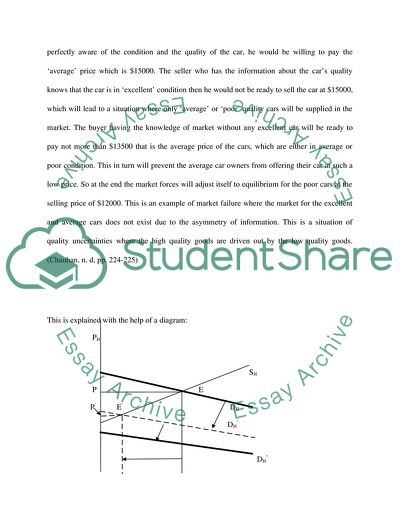Cite this document
(Implications of Asymmetric Information for the Function of Markets at Coursework, n.d.)
Implications of Asymmetric Information for the Function of Markets at Coursework. https://studentshare.org/macro-microeconomics/1752777-using-examples-explain-the-implications-of-asymmetric-information-for-the-function-of-markets-at-both-the-microeconomic-and-macroeconomic-levels-also-discuss-to-what-extent-public-policy-can-help-to-rectify-market-failure-in-such-situations-the-discuss
Implications of Asymmetric Information for the Function of Markets at Coursework. https://studentshare.org/macro-microeconomics/1752777-using-examples-explain-the-implications-of-asymmetric-information-for-the-function-of-markets-at-both-the-microeconomic-and-macroeconomic-levels-also-discuss-to-what-extent-public-policy-can-help-to-rectify-market-failure-in-such-situations-the-discuss
(Implications of Asymmetric Information for the Function of Markets at Coursework)
Implications of Asymmetric Information for the Function of Markets at Coursework. https://studentshare.org/macro-microeconomics/1752777-using-examples-explain-the-implications-of-asymmetric-information-for-the-function-of-markets-at-both-the-microeconomic-and-macroeconomic-levels-also-discuss-to-what-extent-public-policy-can-help-to-rectify-market-failure-in-such-situations-the-discuss.
Implications of Asymmetric Information for the Function of Markets at Coursework. https://studentshare.org/macro-microeconomics/1752777-using-examples-explain-the-implications-of-asymmetric-information-for-the-function-of-markets-at-both-the-microeconomic-and-macroeconomic-levels-also-discuss-to-what-extent-public-policy-can-help-to-rectify-market-failure-in-such-situations-the-discuss.
“Implications of Asymmetric Information for the Function of Markets at Coursework”. https://studentshare.org/macro-microeconomics/1752777-using-examples-explain-the-implications-of-asymmetric-information-for-the-function-of-markets-at-both-the-microeconomic-and-macroeconomic-levels-also-discuss-to-what-extent-public-policy-can-help-to-rectify-market-failure-in-such-situations-the-discuss.


